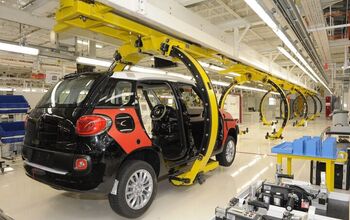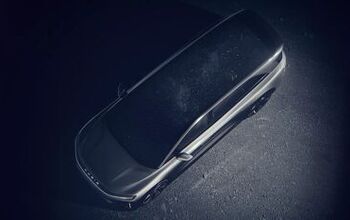Fiat 500: The Littlest Bailout Baby
Chrysler is in desperate need of quick fixes. New versions of old nameplates (300, Grand Cherokee) and quick ‘n dirty refreshes, and modifications of existing, moribund nameplates are not going to keep showrooms busy while new, Fiat-based products wend their way to market over the next five years. And so, Fiat is bringing its 500 minicar to the US next year. At least that’s why Chrysler says it’s coming: to “attract a new customer to our showrooms.” Of course, that’s far from the whole story.
The challenges facing the Cinquecento’s success are even greater when you consider that Chrysler will handpick dealers to build unique showroom “salons” for the 500, in addition to hiring dedicated sales and management staff. Also, all Chrysler dealers will have to carry Chrysler, Dodge, Jeep and Ram brands by 2011, so it’s difficult to understand where the lucky metropolitan-area dealers will find room on the wall to add a Fiat logo. Let alone a possible Alfa badge in the future.
Luckily, the 500 isn’t being brought to the US because anyone inside Fiat or Chrysler thinks it’s going to sell particularly well. The only reason America is getting the 500 is because Fiat gets another five percent of Chrysler’s “equity” when it begins selling a 40 mpg vehicle, per the federal mandate. The other reason: Fiat wants to use the 500 to consolidate its strong presence in Latin America, where small, 100 hp vehicles are more accepted. The majority of 500 production at Toluca, Mexico will go to Brazil and other Latin American countries, as a halo for the Fiat brand’s success there.
Meanwhile, in the US market, the 500 will be little more than an overpriced fashion accessory. It may nibble around the edges of MINI’s niche, but it’s hard to imagine many potential MINI customers being drawn away by a smaller car with less power, especially if the price difference isn’t significant relative to the mass-market B-segment competitors.
Tellingly, even Chrysler’s optimistic sales projections show Fiat Group products making up a nearly unnoticeable percentage of US-market sales. Nobody, from Sergio Marchionne on down, cares if this car succeeds in the US except for the fashionista fanatics who will pay nearly any price for one. And they’ll get exactly what they deserve.
More by Edward Niedermeyer
Latest Car Reviews
Read moreLatest Product Reviews
Read moreRecent Comments
- Cprescott People do silly things to their cars.
- Jeff This is a step in the right direction with the Murano gaining a 9 speed automatic. Nissan could go a little further and offer a compact pickup and offer hybrids. VoGhost--Nissan has laid out a new plan to electrify 16 of the 30 vehicles it produces by 2026, with the rest using internal combustion instead. For those of us in North America, the company says it plans to release seven new vehicles in the US and Canada, although it’s not clear how many of those will be some type of EV.Nissan says the US is getting “e-POWER and plug-in hybrid models” — each of those uses a mix of electricity and fuel for power. At the moment, the only all-electric EVs Nissan is producing are the Ariya SUV and the perhaps endangered (or maybe not) Leaf.In 2021, Nissan said it would make 23 electrified vehicles by 2030, and that 15 of those would be fully electric, rather than some form of hybrid vehicle. It’s hard to say if any of this is a step forward from that plan, because yes, 16 is bigger than 15, but Nissan doesn’t explicitly say how many of those 16 are all-battery, or indeed if any of them are. https://www.theverge.com/2024/3/25/24111963/nissan-ev-plan-2026-solid-state-batteries
- Jkross22 Sure, but it depends on the price. All EVs cost too much and I'm talking about all costs. Depreciation, lack of public/available/reliable charging, concerns about repairability (H/K). Look at the battering the Mercedes and Ford EV's are taking on depreciation. As another site mentioned in the last few days, cars aren't supposed to depreciate by 40-50% in a year or 2.
- Jkross22 Ford already has an affordable EV. 2 year old Mach-E's are extraordinarily affordable.
- Lou_BC How does the lower case "armada" differ from the upper case "Armada"?


































Comments
Join the conversation
If the whole boutique thing doesn't work out they could always reskin it and rebadge it as a Dodge Colt.
It's cute and stylish...they can sell a few as a niche vehicle. The biggest challenge will be the reliability, and general inability to find mechanics who can work on them. The style might make people pick it over a more practical Fit and even pay a little more, but once you add reliability and serviceability, the Honda lead widens. I do think that FUN small cars are a coming trend. But U.S. families with kids (and with more kids than those in Europe) will require much bigger cars than this for the foreseeable future.